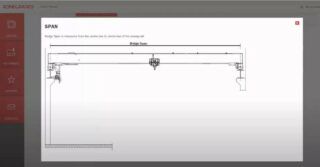Technology
The new turbine for the assumed identical output data regarding water conditions, obtains 40% – 75% higher efficiency per unit area of the rotor blades, than competing devices of known companies from this industry.
This puts this technology in a privileged market position in relation to the competition, as it determines the reduction of the payback periods to 4-6 years. The payback periods naturally depend on the local water conditions, but when submerging turbine only to near half of diameter – but higher than the axis of turbine – it retains about 70% of its nominal power, which is an important operating parameter for turbines with a diameters greater than the river depth).
This result, so important for every potential investor, is the effect of a jump in efficiency increase caused by the specific shape of the turbine blades, resulting in an increase in the flow velocity between the them (using pressure reduction effect), which is characteristic feature of this technology and its greatest advantage.
The innovation consists in the design and implementation of a new shape of the water turbine rotor. The company ABT Accord is the owner of the copyright and industrial property rights of the presented solution. Work on this solution has been going on for over 8 years.
On the Bydgoszcz Canal in Poland, the efficiency parameters of the turbine were tested in various submerging conditions (30%, 50%, 70%, 90%) at different speeds of the pushing set. In order not to disturb the influence of the pusher on the turbine, the turbine was placed in the bow part of the pusher set. During the tests, it turned out that – comparing the obtained power to the working surface – the operation of an incompletely submerged turbine is more efficient. This conclusion was crucial in further simulation studies.
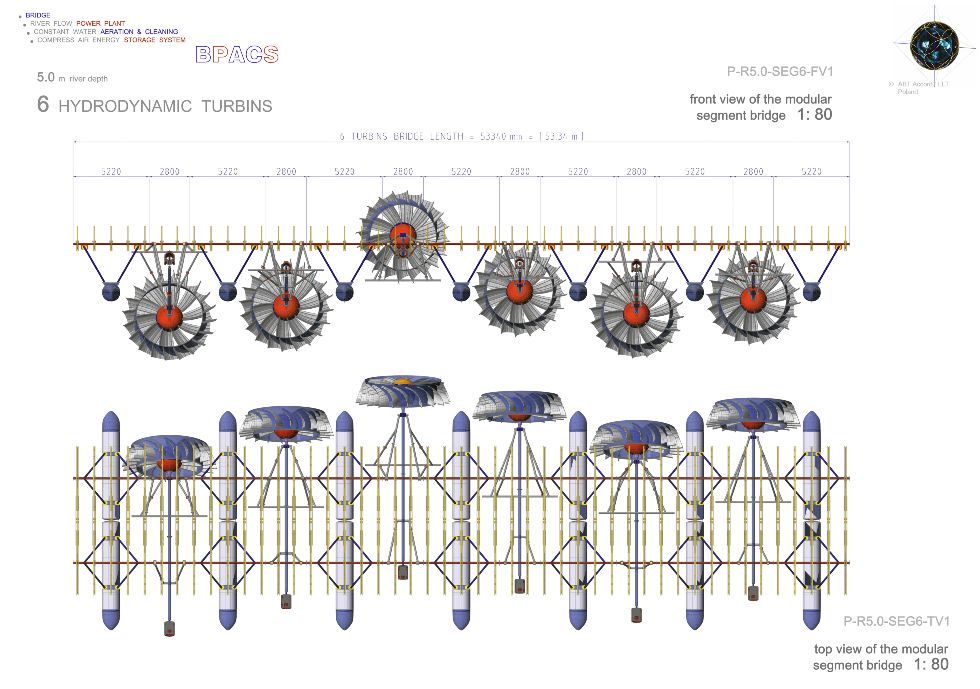
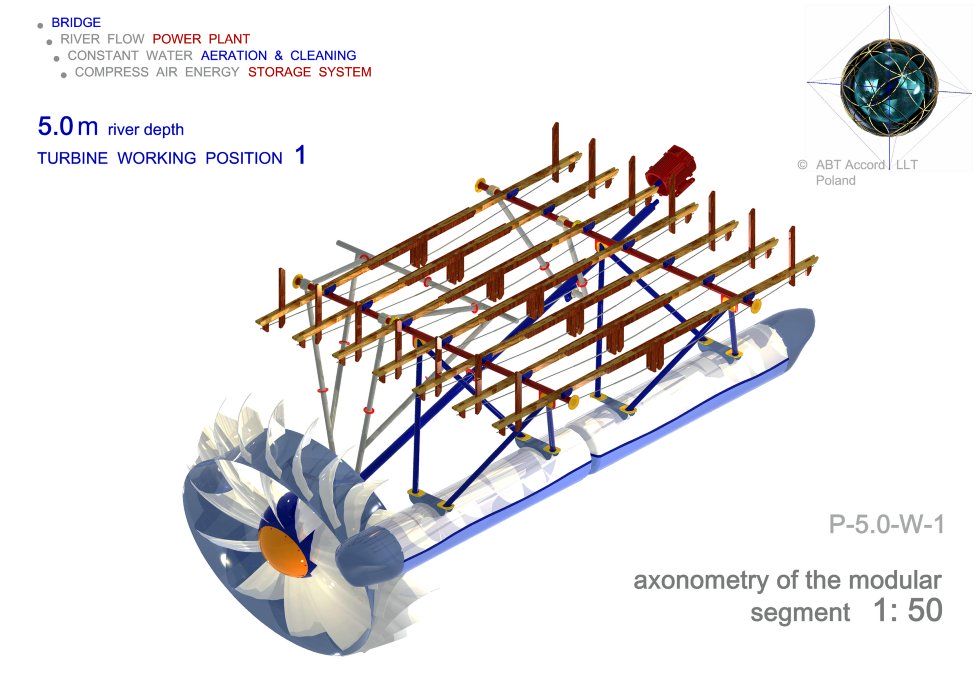
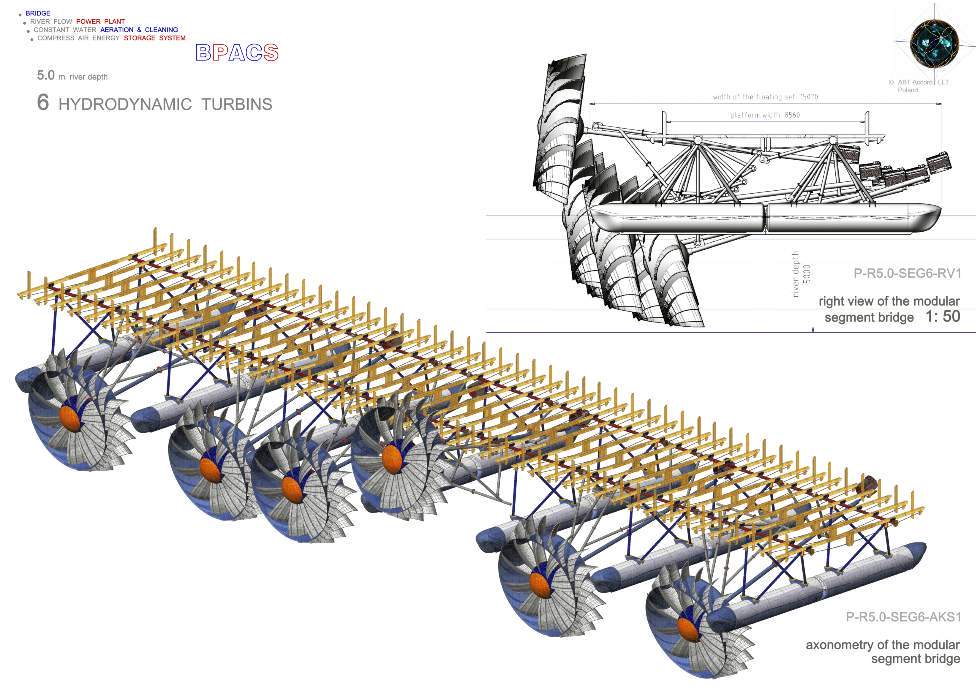
Market strategy
The first floating hydrosets should be built (the size of one hydroset from 6 to 12 turbines) in order to finally verify the operation in natural conditions for a longer period of time. The indicative power of the one hydroset assumed above would then be from 75 kW to 150 kW.
The future of technology
Along with the departure from traditional coal-fired energy, this technology would allow many entities to obtain guarantees and reliability of power supply even in critical situations, such as e.g. blackouts.
This technology can be developed in a dispersed manner, creating a network of entities that are points the distributed energy network.
Global project scaling
Contrary to the claims of laymen, the world has untapped potential of rivers and watercourses (including tides and ocean currents) – these are mainly the watercourses of Asia, Africa and South America. Specific solutions proposed by river turbines allow to obtain exceptional energy efficiency, which has already been confirmed during trials and tests under real conditions.
Industry Opinion
Quote from excerpts from the TRMEW magazine from Grudziądz, Poland from the end of 2019:
” Responding to the request of ABT Accord, which presented new water turbine solutions during the board meeting at the headquarters of the Society for the Development of Small Hydroelectric Power Plants in Grudziądz on April 4, 2019, we find, that if the technical parameters of the new solutions are confirmed:
[…] The above-mentioned devices may contribute to the effective development of the existing hydropower potential not only in Poland, but throughout Europe. The TRMEW company participated in the European project RESTOR Hydro (Renewable Energy Sources Transforming Our Regions), the aim of which was to increase the production of renewable energy in small and micro hydropower plants by inventorying and restoring historic hydrotechnical facilities using water energy, such as mills, inactive hydropower plants, steps dams, weirs and other partitions on rivers.
[..] As part of the RESTOR Hydro project, the hydropower potential resulting from the possibility of using damming facilities and historic mills locations in the EU-27 area was investigated. It is estimated that in Europe there are around 350,000 small installations that used water energy in the past. The RESTOR Hydro project collected data on 50,000 such locations.
[…] Technologies of electricity production using the kinetic energy of flowing water have not been used almost completely so far. The dissemination of their use would allow for the development of the energy potential of rivers to a much greater extent than before, both in Poland and in other countries.
What is the competitive advantage over other turbine designs?
➡ much greater efficiency of energy recovery from flowing waters; the very high ratio of the hydrodynamic turbine power obtained in tests, compared to the best competitive solutions, puts the new turbine on a completely different technological level, not only in Europe, but also in the world;
➡ the turbine, working not completely submerged, cleans polluted rivers and technological canals by aeration (oxidation) and disintegration of flowing pollutants; contributes to the restitution of the natural state of flowing waters;
➡ can work alternately as power plant and pump; it is a partial solution to the problem of drought in agriculture and land deprived of water (it allows for simple irrigation and water accumulation in the ground itself and in retention reservoirs);
➡ the solution is completely friendly to fish and organisms living in the river; the turbine is low-speed, and the generator is always located (in any operating position) above the water surface;
➡ river turbine tests showed a dynamic water flow between the blades and a decrease in the flow velocity behind the turbine; a decrease in speed is a guarantee of no erosion of the bottom and banks of the river, while an increase in the speed of water between the blades means increased energy consumption; this feature is important during a flood – the turbine takes away some of the dangerous energy of the river.
Achieved benefits:
➡ providing global, scalable solutions for the production of electricity from rivers and ocean currents; providing energy solutions in all areas where water is in motion and conventional solutions are not competitive; river energy can be one of the pillars of a sustainable energy future;
➡ the new type of power plant requires minimal maintenance; there are no gears or other mechanisms with a limited service life; the entire set is to be lifted quickly – turbine – drive shaft – generator; the generator is always above the water level, regardless of the position of the turbine;
➡ the developed system allows for modular extensions in the form of floating segments; as a result, power plants can be developed in a concentric form and in a highly dispersed manner.


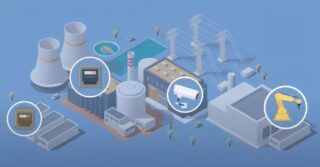
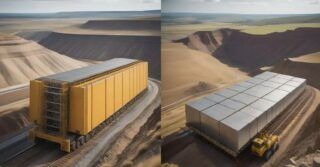
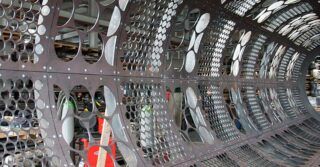
![Methane emissions remains elusive challenge for oil and gas industry [REPORT] Methane emissions remains elusive challenge for oil and gas industry [REPORT]](https://industryinsider.eu/wp-content/uploads/xMethane-emissions-by-source-320x167.jpg.pagespeed.ic.q-7jG2luXb.jpg)

